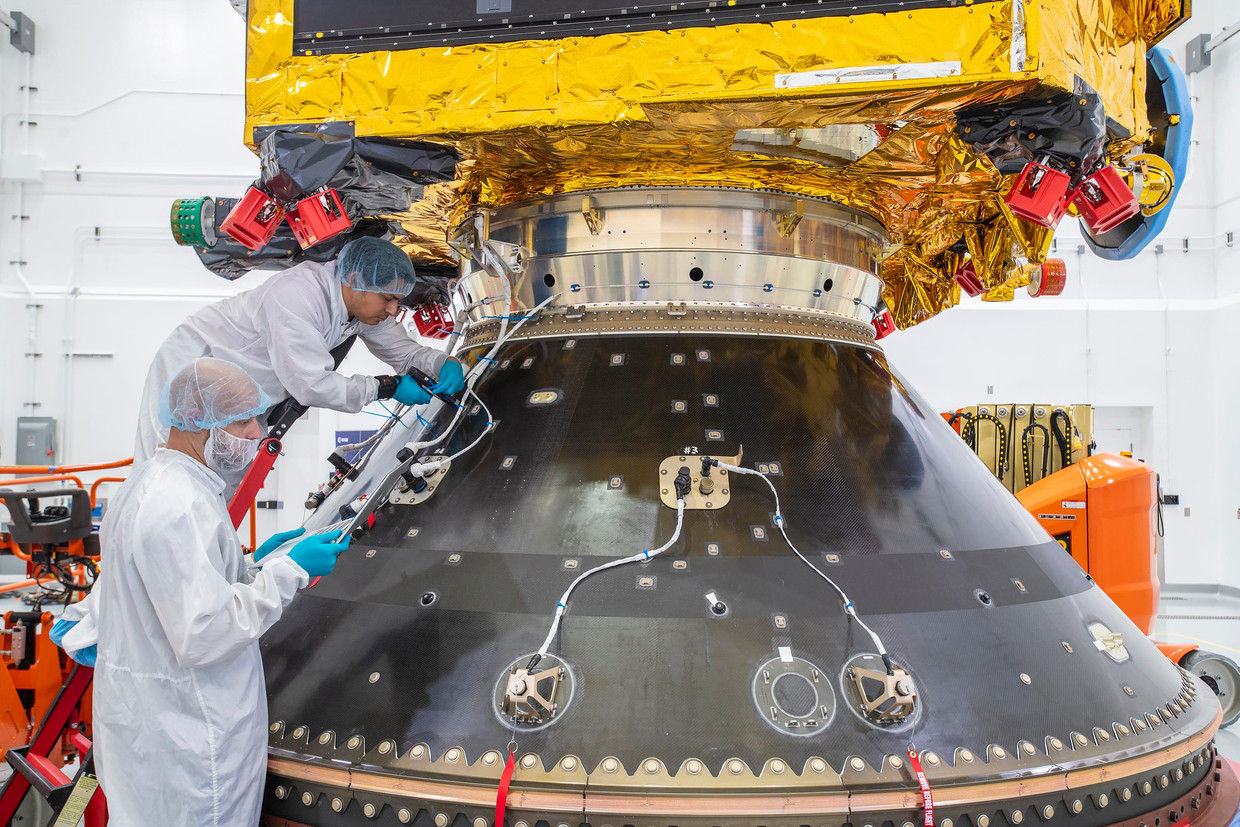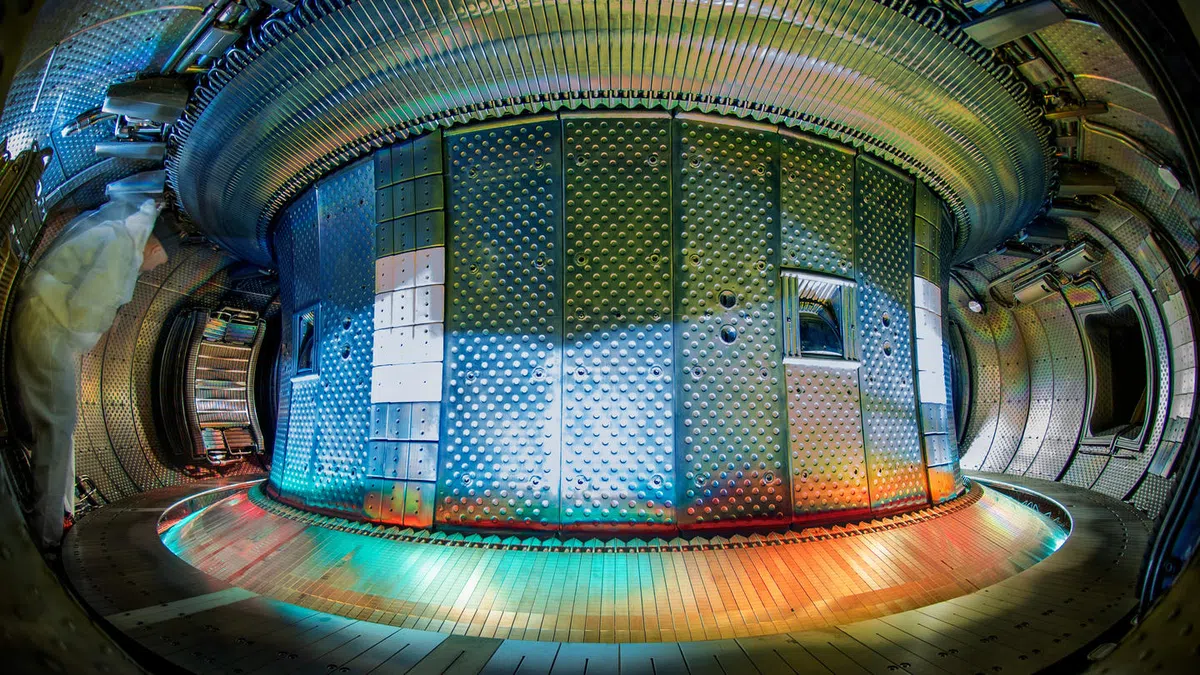Last year, the mood was still depressing among some 450 visitors to the annual Euclid Space Telescope conference. “Due to the international political situation, the Russian Soyuz rocket that was scheduled to launch Euclid is suddenly no longer available,” astronomer Edwin Valentgen of the University of Groningen says on the phone from the current edition in Copenhagen.
After fifteen years of preparation, it was still a question of how—and especially when—Euclid could leave for the universe. But the mood now is hopeful. We will launch on Saturday. Although this always depends on the weather conditions, of course,” he says. The Russians were replaced by the American space company SpaceX, and the launch moved to Florida. “In hindsight, it was actually arranged quickly.”

About the author
Describes George Van Hall De Volkskrant About astronomy, physics and space travel. He has published books on everything from the universe to the smallest building blocks of reality.
Euclid is a telescope for cosmology, the science that describes the universe as a whole. “We want to find answers to the biggest questions we have about the universe,” Valentijn says. High on the wish list is a solution to two of the most pressing cosmic mysteries: the true nature of so-called dark matter and dark energy, which together account for 95% of the universe’s content. “We really don’t understand either,” Valentijn says. “It is hoped that Euclid will give us the answers.” Five questions about this new mission.

1. What is “dark matter” and how will Euclid study it?
Dark matter is a mysterious substance pervading the universe. Unlike the “ordinary” matter that makes up people, houses, planets, and even stars, you can’t see those unknowns.
Astronomers discovered this indirectly, in part because in a universe devoid of dark matter, galaxies like our own Milky Way would spin themselves apart as they rotate. Then the stars scurry away like seats in a whirlpool whose cables break. conclusion? Something has to provide stronger cables and extra gravity that keeps things together. This “thing” is dark matter.
Nobody knows what it consists of. Not even if it mattered at all. “Dark matter can be made of particles, but there are also theories that we don’t fully understand gravity,” Valentgen says.
So Euclid will image billions of galaxies like the Milky Way, which are about ten billion light-years deep in the universe. Finally, the telescope sees a third of the night sky for both hemispheres. This will take about five years and about 2,000 scientists will work with the data collected. “The result is a kind of CT scan of the universe,” Valentijn says. Analysis of this survey is expected to take a few more years. “But we expect to have the first clues within two years.”
One of the things Euclid is looking for is the weakness of the lens. Because gravity distorts the space through which light travels, clumps can act as a kind of lens. By mapping these gravitational lensing distortions, you can theoretically calculate how matter is distributed throughout the universe, including things you can’t see with the naked eye. You just have to look at a lot of galaxies for that. Euclid is a true satellite of big data.

2. What about “dark energy”?
Dark energy is called dark because astronomers can’t see this elusive “thing” either. All they know is that it is accelerating the expansion of the universe. You can think of the Milky Way, the galaxy we live in, as a raisin in currant bread the size of the universe. When you put this bread in the oven, the raisins move more and more. The same thing happens with the universe, where you can think of dark energy as the furnace. Or more precisely: as a kind of cosmic bicycle pump that makes the universe get bigger and bigger.
The question is: how fast can this happen? Large-scale studies have been contradictory in recent years. “We need a new vision to solve this problem,” Valentijn says.
So Euclid would map intergalactic distances, among other things. Because digging deeper into the universe also looks back in time—it takes some time for light at its full speed to reach Earth—it is possible to map the last 10 billion years of the universe’s history. As if the clock in the oven had suddenly turned back and I saw the raisins moving towards each other again. “I think we have a good chance of solving this problem with this machine,” says Valentijn.
3. Will Euclid achieve more?
Yes. You can also use it to map the evolution of galaxies, for example, or the structure of the “cosmic web,” the largest structure in the universe. We can use it to study objects moving through the solar system or observe giant black holes at the center of distant galaxies.
There’s also good news for those who don’t like complex niche articles, but do love pretty pictures. The telescope has two cameras, one that looks at visible light and one that looks at infrared. “You can count on the Euclid almanac with the best images,” Joost Carpay, who is participating in the mission on behalf of the Dutch space agency NSO, jokes.

4. What is the next step for Euclid after launch?
It was a “horror scenario” that unfolded in late March at the ESA Mission Control Center in Darmstadt, Germany. First, one of Euclid’s thrusters failed, then the backup started misbehaving as well.
The engineers involved were at a loss, but fortunately it was nothing more than a simulation. I wanted teams to get used to making decisions under time pressure. “I was able to achieve this effect with two flawed batches,” said Joe Bush, head of simulation. on the Esa website.
Such exercises confirm that, in addition to the launch itself, the period after it is still nail-biting. In the first six months after launch, all Euclid tools are gradually tested and operational. If something goes wrong or a technical problem occurs, it can be mission-killing. “These first months after launch are always the most exciting period,” says Carpay. “Although I am often positively surprised at how well engineers can solve any problems from the ground up.”
5. What does Holland contribute to Euclid?
Euclid is a project of the European Space Agency (ESA). This means that the Netherlands, as a member state of the European Space Agency, is obligated to contribute to the mission. He will get something in return. “Often such investment ends up in the national industry,” Karbay says. In this case, the result was that Airbus in Leiden was tasked with the control system that allows the space telescope to accurately maneuver itself into position. “This is very important in these kind of large-scale measurements,” he says.
The Netherlands also contributed from the scientific world by innovating and designing the data processing system. “ESA had no experience with the amount of data that Euclid would collect and transmit, over such great distances,” Valentijn says. After launch, Euclid will fly to the Lagrange point 2, the place where, for example, the James Webb Space Telescope is located, about 1.5 million km from Earth.

The measurement data then ends up in nine large data centers, including one at the University of Groningen, which opened just two weeks ago. “We will coordinate all those sites with a central system that we devised and designed here in Groningen,” he says. “This system is the baby of our group. I am very proud of it.

“Total coffee specialist. Hardcore reader. Incurable music scholar. Web guru. Freelance troublemaker. Problem solver. Travel trailblazer.”







More Stories
This new record in the field of nuclear fusion is a promising step forward
Another commercial party goes into space: ‘Space travel always remains risky’
This orangutan in Sumatra treats himself with herbs